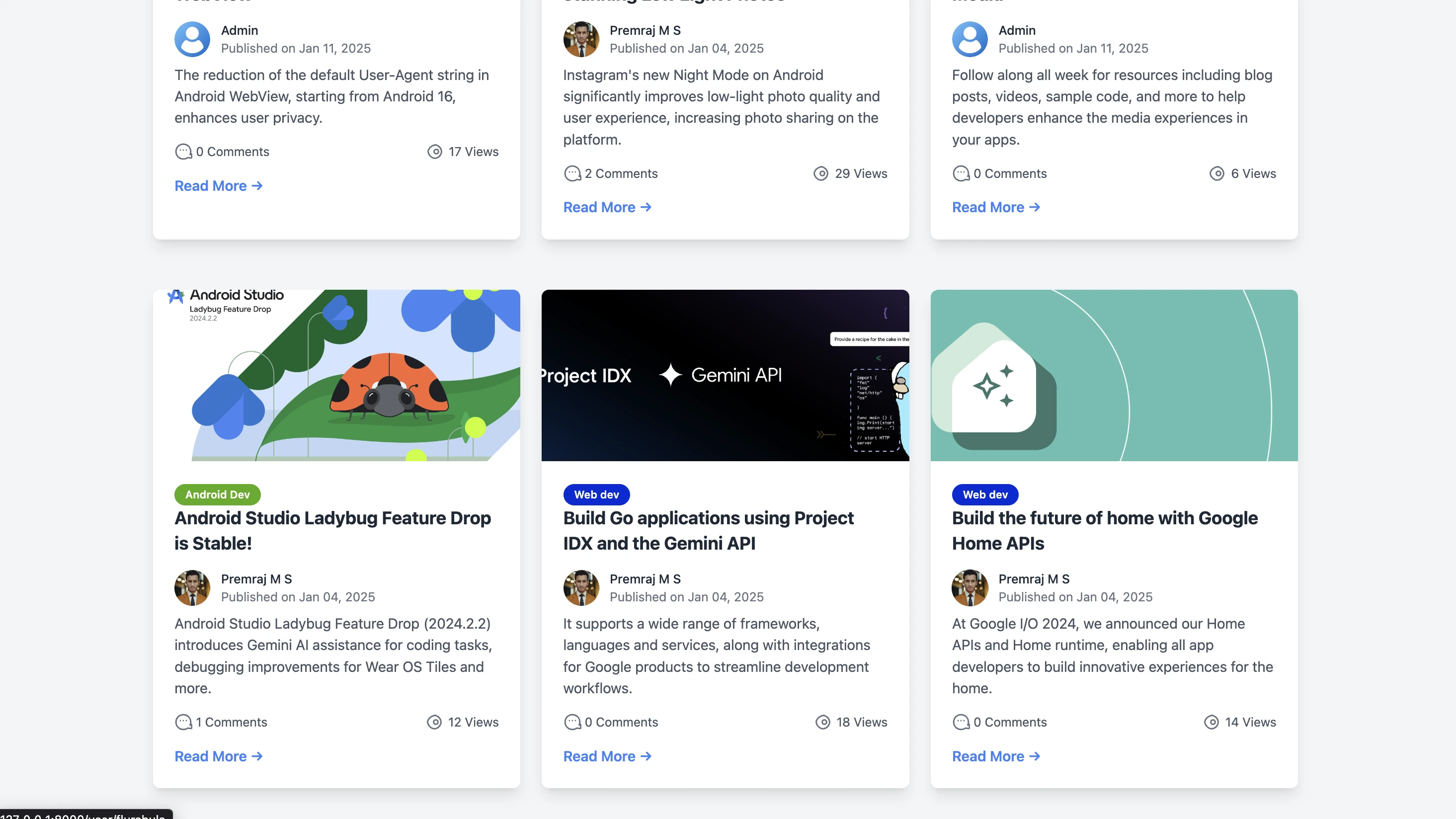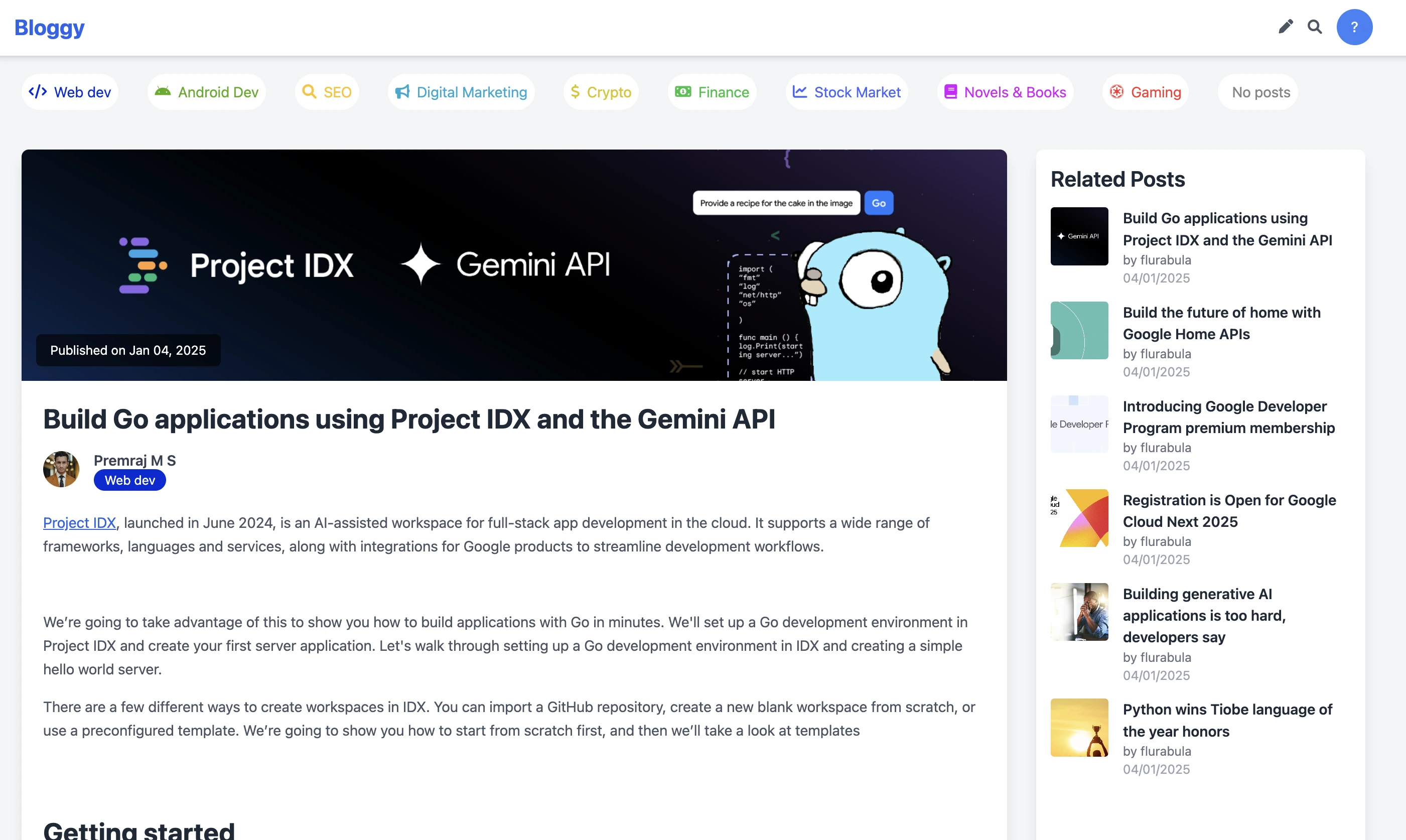Looking to build a feature-rich blogging platform with Django? In this post, I’ll walk you through my academic project—a fully functional blogging website developed using Django, Tailwind CSS, and jQuery. This platform includes user authentication (Google login & manual signup), follow systems, SEO optimization (perfect Google Lighthouse score!), rich text editing, notifications, and an admin dashboard for seamless content management.
Whether you're a beginner exploring Django or an intermediate developer looking to enhance your skills, this project covers real-world functionalities like post drafting, profile management, search features, and moderation tools. Plus, I’ve included the complete source code for you to explore and customize!
Let’s examine the key features, design choices, and technical insights that make this Django blogging platform unique.
Features of the Django Project
This project is a pack of features and functionalities inspired by several social media platforms. It will be longer if I include all of that in this post. So it is better to install it on your device and explore all the features. Here, I include all the admin and user-side features.
User-side features
- SEO friendly design
- Mobile, tablet-friendly design
- Google and manual user Authentication (Login and sign up).
- Sitemap.xml
- Scrollable Category navigation with customizable color.
- User profile page with Instagram model follow button.
- Grill-based blog index.
- Separate category page.
- Display the following.
- Ajax notification
- Ajax search
- User-friendly Pagination.
- User followers and following count.
- Rich text editor for blog writing.
- Separate Media gallery: where all the images that you are storing will be saved. You can easily delete it.
- Comment and view counts
- Hashed password save: So your password is protected.
- Comment system (only for logged-in users)
- The author can moderate the comment.
Admin side features
- Comprehensive analysis page
- User page with delete and block user features.
- Blog Post list with all the necessary details.
- Comment moderation.
- Category creation with jQuery.
Technologies Used:
Frontend & UI
Tailwind CSS – Utility-first CSS framework for responsive design.
jQuery & AJAX – Smooth, dynamic interactions (likes, follows, notifications).
SweetAlert – Beautiful pop-up alerts for better UX.
Font Awesome – Scalable icons for buttons and menus.
Bootstrap 5 – Used for additional UI components and grid layouts.
Backend & SEO
Django – High-level Python framework for secure, scalable backend.
Pillow – Python imaging library for handling user-uploaded images.
sitemap-django – Auto-generates sitemap.xml for better SEO indexing.
Whether you're a beginner learning Django or an intermediate dev looking to integrate real-world features, this project covers it all—plus, the full source code is available!
Let’s dive into the development process, key challenges, and how you can customize this platform for your own projects.
Why This Works?
✅ SEO Optimization: Mentions sitemap.xml, Lighthouse score, Django blog—keywords that rank.
✅ Tech Breakdown: Explains each tool’s role (e.g., Pillow for images, AJAX for real-time updates).
✅ Engagement Hook: Targets both learners ("beginners") and practical builders ("source code included").
Showcase:feature-rich blogging platform with Django




SOURCE CODE GITHUB